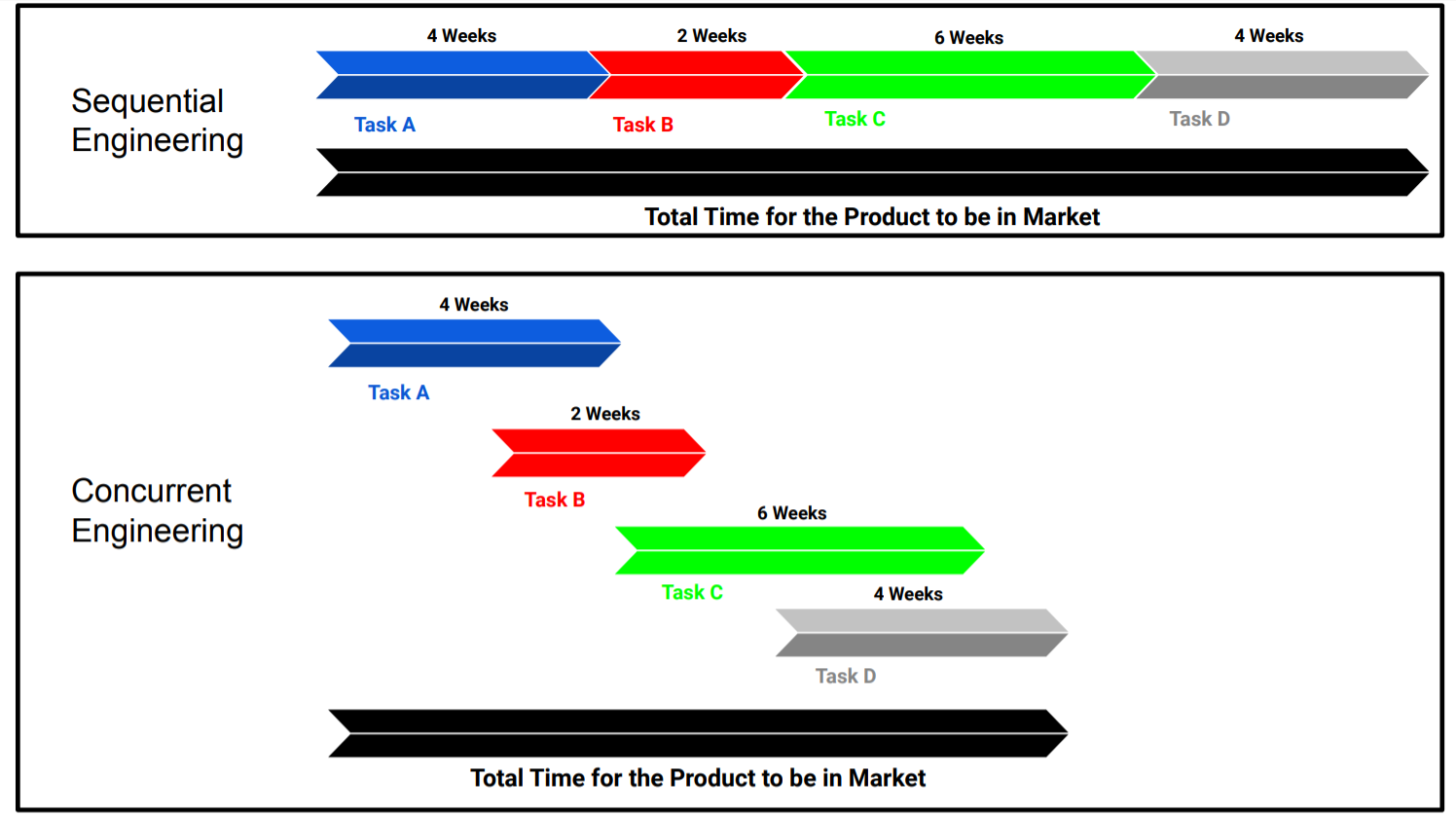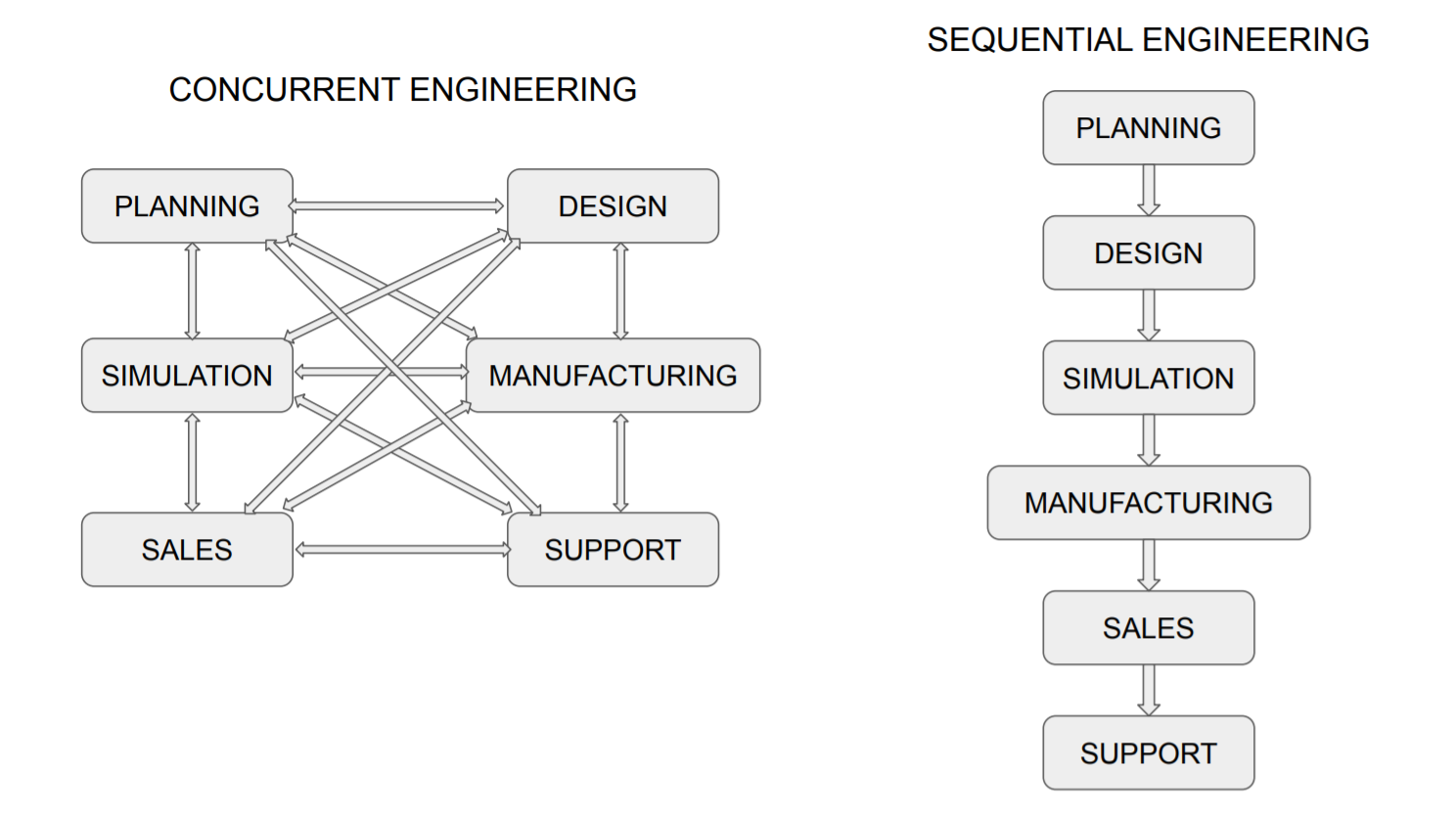What is Concurrent or Simultaneous Engineering?
Concurrent engineering or simultaneous engineering is an approach where the different stages of product development run simultaneously rather than sequentially. It It reduces overall product development time and launching products faster in the market.

As shown in the above image, the next task starts in simultaneous engineering as soon as its dependency from the first task finishes. In this way, teams can do multiple tasks at any point in time.

Compared to sequential engineering, in concurrent engineering, all departments such as marketing, mechanical, electrical, & software design, and manufacturing teams work in parallel. All team members work to close or reduce the dependency of a task from another team.
For example, a marketing team’s first preference is to provide complete product design requirements to the design team. So that they can start work on time for timely delivery. Sometimes the product design team can start their work with partial requirements.
Advantages and Disadvantages of Concurrent Engineering?
Advantages
Implementing parallel working during product design and engineering has the following advantages.
- Faster launch of products in the market.
- Reduced product development costs.
- Increased productivity because we can correct mistakes in the initial phase of design.
- Competitive advantage.
- Increased collaboration between different teams.
Disadvantages
- Difficult to manage. Specific Software solutions are available to solve this problem.
- More collaboration between teams is required.
- Parallel working results in overdesign because every team wants to be on the safer side. For example, the electronics team can ask for a larger PCB size to reduce their risk. That may increase the overall product size.
- In-depth risk analysis and its mitigation plan are required.
We will keep adding more information on concurrent and sequential engineering. Please add your comments, or questions in the comment box.

Add a Comment